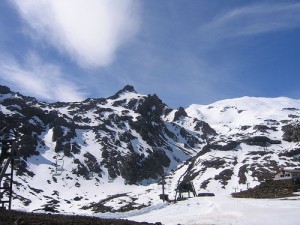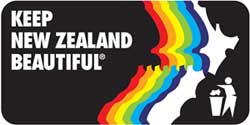Be An Urban Mountaineer.
In 2010 mountaineers removed two tons of rubbish from Everest, rubbish that we see in our everyday lives. But what was it doing up there in the first place, and what can New Zealanders do to help? With our beautiful mountain ranges, we should have a good idea on how to keep things litter free… shouldn’t we?
Everest, Nepal, the highest mountain in the world. Ice loaded, a frozen world, its deathly stance reaching up and up, protecting the sky from the world below. Many have conquered, many have failed, and many are yet to try. When I think of Everest, I perceive greatness beyond imagination;
I envision a place where mother earth is still respected. If she decides to send a storm you will not reach the top, if she crumbles an avalanche you will be trapped. Now I have not been to Everest, I have not yet even been to Nepal, these places are all still a dream on the wings of imagination. However I do watch the news, and have noticed this sky scraping mountain and its visitors mentioned often these past months.
May was the most prominent month for adventure, beginning with New Zealander Wendy Smith. Smith and her team skydived from almost nine thousand metres amongst the Himalayan Mountains, an intense record breaker. Next there were Apa Sherma and Jordan Romero, both breaking world
records of their own. Sherma summated for a whopping twentieth time, and Romero became the youngest person ever to reach the top at just thirteen years old. With so many achievements, what else could possibly be in store for the mighty mountain?
Have you ever pondered how many people have climbed to the summit of Everest? The figure is somewhere in the 3400s, and some of these lucky people have even scaled it more than once, bringing the summit ascents to more than 5070. Comparing these figures to those of New Zealand’sTongariro Crossing, Everest would not even begin to compare, but do take into account that it is the highest mountain in the world. But what effect have these numbers had on Everest?
Those of you who have hiked the Tongariro Crossing will have discovered, and maybe even had intimate relations with the ‘just in time yet hold your  nose’ toilet at the bottom of the Devil’s Staircase. Even more so, did you take into account the lack of litter? DOC hut wardens do an incredible job of managing the track, but imagine their situation another eight thousand feet in the air. The freezing temperatures would bite through their statutory shorts, as they crippled under the weight of oxygen tanks, praying they would not need to go to the bathroom. Everest’s polar bear cold climate makes it impossible for it to have hut wardens, or huts and even toilets for that matter, so where does a mountaineer put his toilet paper and granola bar wrappers? On the floor. Yes, with Everest’s ever changing climate and mighty height, littering does not cross a mountaineers mind.
nose’ toilet at the bottom of the Devil’s Staircase. Even more so, did you take into account the lack of litter? DOC hut wardens do an incredible job of managing the track, but imagine their situation another eight thousand feet in the air. The freezing temperatures would bite through their statutory shorts, as they crippled under the weight of oxygen tanks, praying they would not need to go to the bathroom. Everest’s polar bear cold climate makes it impossible for it to have hut wardens, or huts and even toilets for that matter, so where does a mountaineer put his toilet paper and granola bar wrappers? On the floor. Yes, with Everest’s ever changing climate and mighty height, littering does not cross a mountaineers mind.
Mountaineer’s can only afford to carry what they need, and with 3400 of them having passed up and back down Everest’s slopes, littering is becoming a major problem. Shockingly, in between rock, ice and eyeball white snow, there lays nearly a century’s worth of rubbish. It snakes to the summit like an unruly snail trail, guiding mountaineers to their destinies.
This river of half full gas canisters, empty oxygen bottles, skeleton tents, coiled ropes, and everyday utensils, flows more than 8,848 meters. Sometimes it is sparse, sometimes swimmable, always littering. Should there not be laws against this? Yes there should and there are, but just as we are supposed to put litter in the bin, there are many people who do not follow suit.
Luckily for Everest help is at hand in the form of seven time summiteer Namgval Sherpa, and his expedition ‘Extreme Everest 2010’. Out of thousands of possible mountaineers, it was down to Sherpa and his team of nineteen Nepali climbers to bring the years of rubbish home. But, what was their environmentally friendly plan? Did they climb the highest mountain in the world without oxygen, food, shelter and rope? Well, yes actually they did. Maybe not to such extremes but they could afford to lose the oxygen and breathe thin air for the sake of cleaning up their act. As May was
the popular month for Everest conquering, climbers wasted no time in setting off, to embark on the litter pick of a lifetime.
But why had no one attempted this before? Actually they have, and still are. Back in 2008, Asian Trekking organised the ‘Eco Everest Expedition’, which has taken place every year since. So far the expedition has brought down to base camp: more than 12,000 kilos of rubbish, 300 kilos of human
waste and even the wreckage of an Italian Army helicopter which had been stuck in the ice since 1973. Climbers involved in the eco expeditions brought down all their own human waste for proper disposal. They even handed out toilet bags to other parties at Everest base camp, so everyone could carry on the good will.
So what is so different about Extreme Everest Expedition 2010? For starters they were working in the ‘death zone’, a place that sends shivers up the spine. Up there the mountaineers face freezing temperatures, the thinnest of air and the unruliest of territory, if anything the surrounding rubbish
just goes to show how much it takes to survive in such climates. The expedition’s mission was to clear more than two tons of rubbish, which meant multiple trips in and out of the death zone. This is the first time mountaineers have cleaned this high, and did I mention that this brave team set out
with empty rucksacks? Their mission lasted a whopping forty days, and they descended with rubbish that weighed around 2,000kg. This time the mountaineers were not out to conquer Everest, but to save her.
This expedition got me pondering; do we not see rubbish every day here, in our non-8,848 metre lives? Do we not see it climbing street corners, floating in rivers and marching down our drains? I know we do, each time I go for a run I come hurtling back with plastic bottles and tin cans in tow. But we are not surviving in freezing temperatures; we do not have to carry the bare minimum through life. So why is it still a problem? The Nepali mountaineers had previously completed their dreams of climbing Everest, yet returning to wipe waste from her sides was not beneath them. Many of us are living our dreams every day, but what if these achievements do not involve picking up litter? But we can, let us be urban mountaineers! Our good thing is we do not have to risk our lives to clean up our act, or travel thousands of miles to get to waste. If mountaineers are going to the toilet in a bag and carrying it around for weeks, then surely we can embark on an expedition to our streets with a bag and some rubber gloves. Like Sherpa and his team, we may not have personally dropped the incriminating stuff, but we should be passionate about cleaning it up.
Luckily, there are many urban mountaineers already passionate about our streets. With National Clean Up Week just around the corner, they are busy preparing for their our own extreme expeditions. With many events happening in your area! Keep New Zealand Beautiful (KNZB) have organised cleanup projects, stream restoration, graffiti removal and tree planting, all they need are mountaineers of the streets! Check out their website for the details: www.knzb.org.nz, and if there are no events happening in your area, contact them, they would love to hear your suggestions.
 Another great website I found on my mission against litter was www.beatidykiwi.org.nz, they have a page where you pledge your allegiance to fighting litter. My favourite one is “I will toot/flash lights at someone littering from their car”. I could just imagine mountaineers on the top of Everest,
Another great website I found on my mission against litter was www.beatidykiwi.org.nz, they have a page where you pledge your allegiance to fighting litter. My favourite one is “I will toot/flash lights at someone littering from their car”. I could just imagine mountaineers on the top of Everest,
fighting over a dropped packet. But we do not have to go to the top of the world to make a change, we can achieve greatness in our own towns and cities. There are people risking their lives to pick up litter, and we are lucky because we do not have to. Go on, be an urban mountaineer today, and
bring beauty back to our streets!
loading...
loading...
Tags: green




Hi Sarah,
Great first piece of writing! I’ll share it with my students at school to get them inspired for the National Clean-Up Week.
loading...
loading...
Hi Sarah – I agree totally. Here in Paremoremo, North Shore, Auckland, we have a very strong community with a number of local initiatives specifically aimed at improving our environment.
Friends of Lucas Creek are currently undertaking a cleanup of the Albany waterfall, and Friends of the Wharf, which I co-ordinate, has for some years, worked to keep the wharf and reserve area free of litter, and also to clear weeds and replant as appropriate.
Check out our website: http://www.parepublisher.co.nz/
loading...
loading...